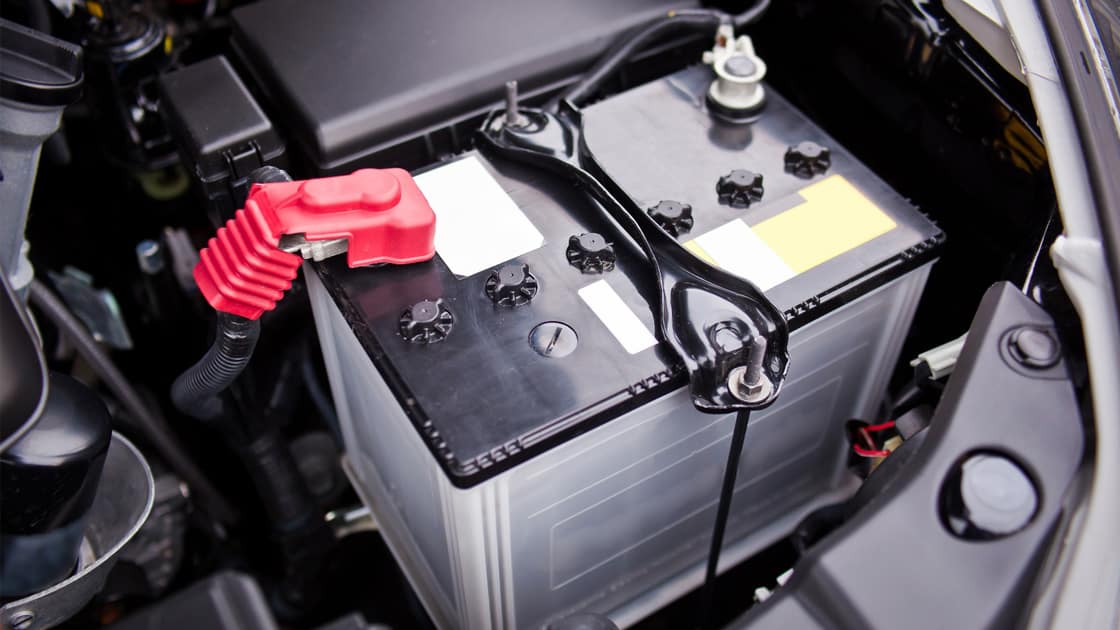If you ever wonder how to recondition a car battery, you have come to the right place. Our article will tell you how to recondition car batteries as well as address some of your common concerns.
First are lead-acid accumulators’ fundamentals, then a step-by-step guide, and finally the answers to some frequently asked questions. After this, you will be able to bring your dead battery back to life.
What is Battery Reconditioning?
To answer the question of how to recondition a car battery, we should first answer the question of what reconditioning a battery means.
Basics About Lead-Acid Batteries
Car batteries are an essential part of any car. They start the engine and fulfill the electrical demand for automobiles.
In electric cars and hybrid vehicles, batteries even provide power for the engine. Hybrid cars often have nickel-metal hydride (NiMH) or a lithium-ion (Li-ion) battery, while electric vehicles only use the latter.
But today, we focus on wet (flooded) lead-acid batteries. These black boxes are what you often find in regular internal combustion engines.
They have got that name because they have lead plates that are submerged in acid. The chemical reaction, which comes from this placement, releases energy and provides you with a voltage and current.
Your car battery doesn’t store electricity but chemical energy. When you start your engine or turn on your music system, it converts the chemical energy into electricity.
Car Battery Reconditioning Principles
Because lead-acid batteries use a chemical reaction to provide electricity, you can recharge them by reversing that said reaction.
When your engine is running, your battery is recharged by an alternator. But if the demand of your car exceeds the alternator capacity, your battery will have to provide extra power.
Charging times increase over time, while efficiency and charge capacity decrease. This is because the chemical reaction in the battery slowly builds up sulfate crystals.
With this article, we will tell you how to recondition a car battery that won’t hold a charge.
Reconditioning a car battery is the process of cleaning these sulfate crystals, refilling the electrolyte solution within, and recharging the battery.
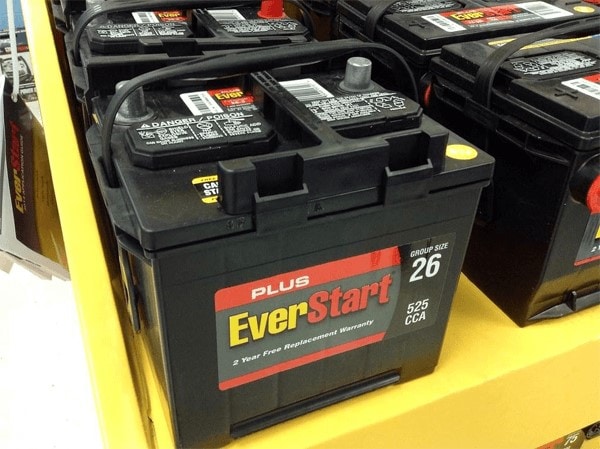
A car battery
How To Recondition A Car Battery At Home
Preparation
The list of essential equipment for car battery reconditioning includes:
- PPE (e.g., eyewear, chemical-resistant gloves, apron)
- Battery charger
- Voltmeter
- Toothbrush
- Wire sponge
- Slotted screwdriver
- Funnel
- Several buckets
You are likely to have most of these at home. There are battery chargers and voltmeters at every Home Depot and Walmart.
You will also need the following ingredients to create a cleaning solution and an electrolyte solution:
- Distilled water (you can’t use tap water)
- Baking soda
- Epsom salt
Step-By-Step Guide To Reconditioning A Car Battery
Safety
Personal protective equipment for this case includes eye protection (goggles or face shields), chemical-resistant gloves, and an apron.
The acid in your battery can eat through concrete so please always have protective equipment on you. Its fumes and invisible droplets are harmful too.
This is why it is recommended to do this task outside. If you have to do it indoors, make sure the room is very well-ventilated and has a fan running.
Prepare A Cleaning Solution
This cleaning solution has a baking soda-water ratio of 2:1. It is for cleaning out the corrosion in the battery terminal.
The result should be a runny paste-like mixture. You can also use this solution for acid spills on your floor or working station.
Clean The Battery
To remove sulfate crystals, you can use a toothbrush dipped in the cleaning solution.
For stubborn corrosion, you may need steel wool or sandpaper grit. A foaming reaction will indicate that the cleaning mixture is working.
After rubbing the crystal, wipe away any liquid and let the terminals dry off completely.
Verify The Voltage
This step determines whether it is possible to recharge your old battery and how long you should recharge it. You do it with a voltmeter.
Similar to boosting a car, hook the bright cable to the positive terminal and the dark one to the other terminal. The display on the voltmeter will tell you the result.
A normal battery has 12.6V (2.1V for each one of the six cells). If your battery reads 10V to below 12.6 V, you can recharge it.
Units with a voltage below 10V are not eligible for reconditioning. In this case, a new replacement is your only option.
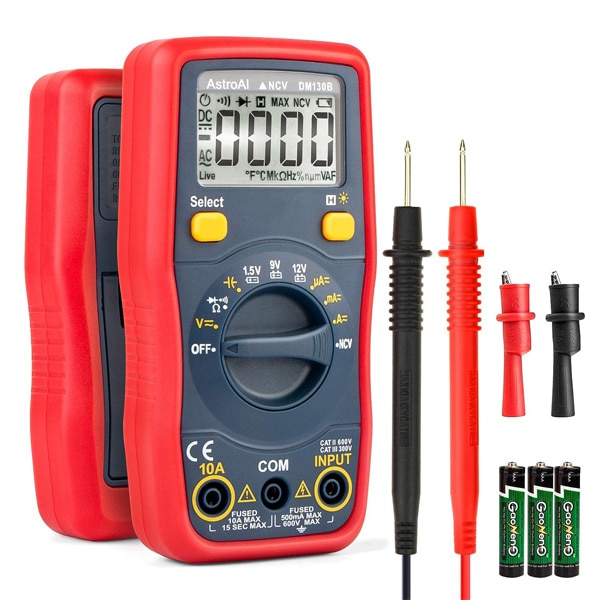
Voltmeter
Empty The Battery Cells
At this step, you will empty the liquid content inside the battery. To do so, prepare a large bucket and some baking soda.
A step of how to recondition a sealed car battery is to remove the battery cover and take off the cell caps with a flathead screwdriver. Now slowly pour out the liquid content into a container.
Baking soda can help neutralize the acid for later disposal. This is hazardous waste, so don’t dump it right into the sewage. You should take it to a waste disposal center.
Clean The Cells
Like cleaning the exterior of the battery, you clean the cells with the baking soda solution. Pour the baking soda mixture into the cells with a funnel to avoid spillage.
Once the cells are filled, put on the cell caps and battery cover. Instead of using a toothbrush or steel wool, just shake it for about a minute.
After that, unseal the unit and dump the solution into the above waste bucket.
Replace Battery Electrolyte Solution
The cell solution for a lead-acid battery is an electrolyte solution of distilled water and Epsom salt. You will need 1 liter of water and 4 oz of Epsom salt.
Mix them until the mixture is clear. You can speed up this process by boiling the water beforehand. However, this is not required.
Once the new electrolyte solution is ready, use a funnel to pour them into the cells. After that, reseal the battery and shake it again to allocate the salt evenly.
Half of the time, car batteries fail because of the loss of water. This can happen due to overcharging or extreme heat.
So changing electrolyte solution is the first answer that comes to mind when one wonders how to fix a dead car battery cell.
Recharge The Battery
This step requires the longest amount of time. A usual battery charge needs about 36 hours to complete.
If something goes wrong, there is a chance of an explosion, so set up a safe and secure area for this step. Additionally, take off the battery caps again as the cell content will heat up and may overflow.
Now hook the trickle charger up with your battery and connect it with the specification of 12V and 2 amps. As another safety measure against explosion risk, place the charger as far as possible from the battery.
A car battery charger is like a laptop charger. It converts AC to DC and adjusts the voltage the same way a laptop charger does for a laptop battery.
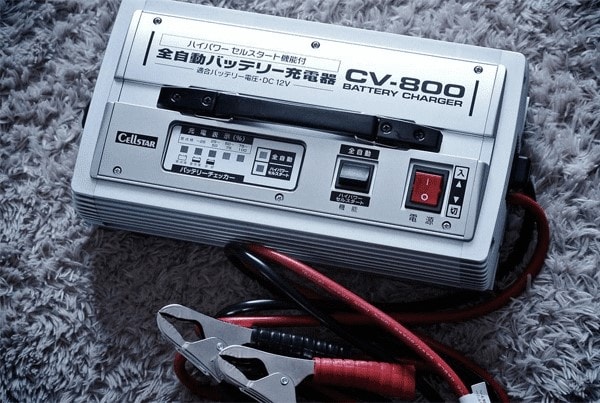
A charger
Test The Battery
Bring out the voltmeter again to check if your battery is fully charged. You should see a number of about 12.42V. If you find anything lower than that, charge the battery again for 12 hours.
Once the battery passes the initial voltmeter test, reinstall it and perform a load test. Turn on your car and the full beams for about 5 minutes.
While your battery is under load, test it one more time with the voltmeter. If you see 9.6V on the voltmeter, you are good to go.
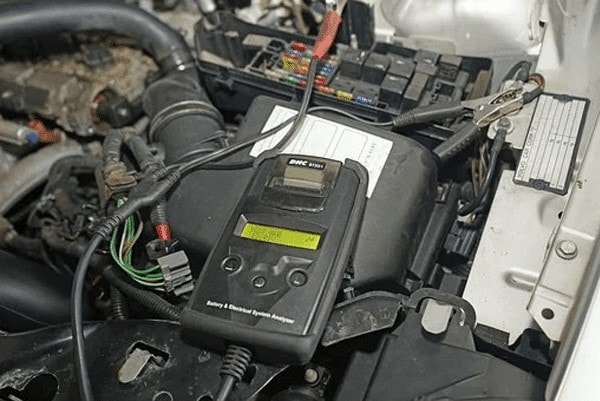
Test your underload battery
Related:
- What Is Car Battery Voltage? – For A Healthy Vehicle
- A Detailed Guide On How To Test Batteries With A Multimeter
- How Many Amps Is A Car Battery to Ramp up Your Engine?
- How To Charge A Car Battery At Home? Reasons For Charging Failure & FAQs
Frequently Asked Questions
What Can I Use Instead Of Epsom Salt?
Now we have shown you how to restore a car battery with Epsom salt, you probably wonder what other ingredients you can use.
There are two other sulfates suitable for this job. They are copper sulfate and aluminum sulfate.
Can I Use Vinegar And Gatorade If My Electrolyte Solution Is Low?
If my electrolyte solution is low, you can add distilled water. Vinegar will cause lead acetate and negatively affect your battery performance.
Gatorade won’t work either. It is better as a refreshment for your hard work.
Are Reconditioned Car Batteries Any Good?
Even though reconditioned lead-acid batteries are not the same as new batteries, they can get the job done. You can recondition your battery three to five times before having to let it go.
How To Restore A Dead Car Battery Without Epsom Salt?
If Epsom salt is not available, you can employ a 200A charger or a smart charger. Still, these methods won’t solve the electrolyte deficiency issue.
A 200A charger can get your car running after about 15 minutes. Meanwhile, smart chargers have a recondition mode that often takes 24 to 48 hours.
How To Rebuild A Car Battery With New Plates?
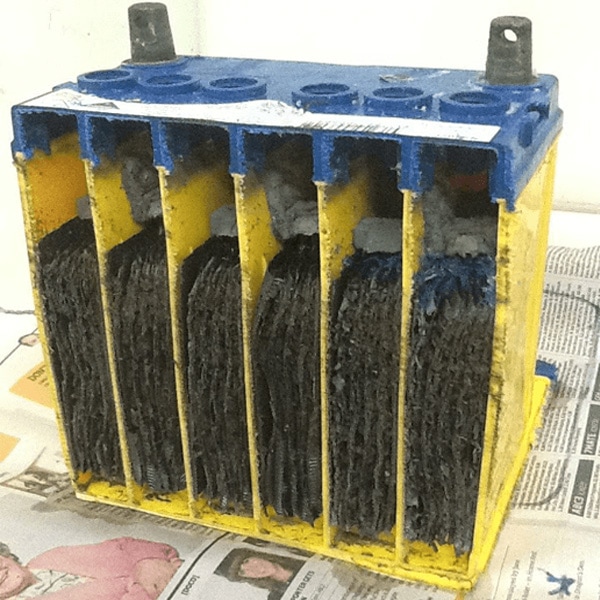
A cross-section battery
To replace plates in old batteries, you should first replenish the acid to the proper level and ratio. Do it with an acid tester and a fresh acid mixture.
Then, depending on your battery model, you can remove the cells along with the top panel or take them out from the side of the casing.
After installing new plates, charge the unit with a 1-amp trickle charger for about 30 hours. You should pay attention to the acid level and fluid level.
How Long Does A Reconditioned Battery Last?
A reconditioned battery can stay with you for one to three years. It is hard to tell the exact lifespan of a reconditioned battery since it depends greatly on the demand of your car and how you use it.
Conclusion
That was our answer to the question of how to recondition a car battery. The process includes cleaning the sulfate corrosion, replacing the electrolyte solution, and reversing the chemical reaction with a battery charger.
Thank you for reading!
WHAT'S NEW
The best AGM battery chargers will be the ideal option to revive your flat battery without relying on professional help. These handy high-tech chargers are extremely beneficial because they offer...
The Genius Boost GB40 is popular because of its ability to help boost your vehicle when it has battery issues. Many of our customers wonder why the Noco GB40 can work greatly like so. So, we have...

